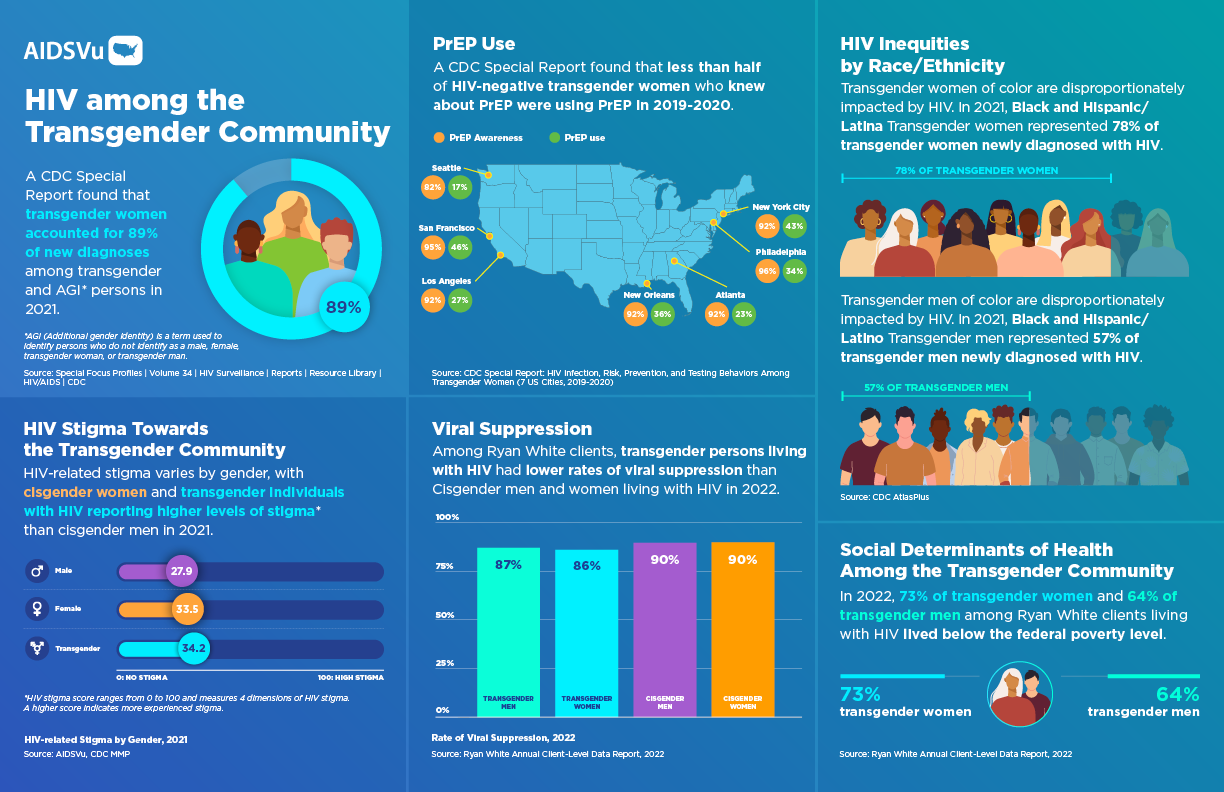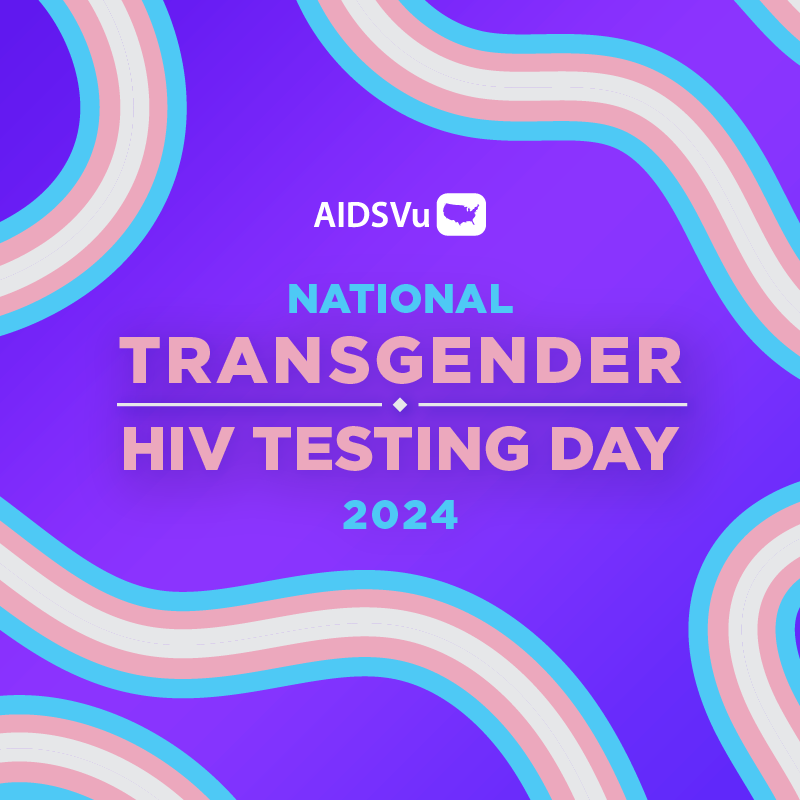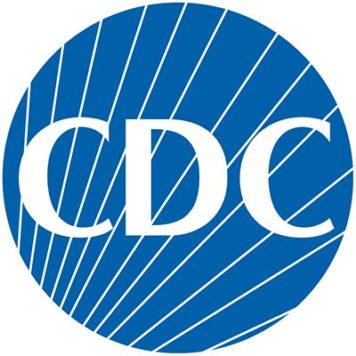On April 18, AIDSVu recognizes National Transgender HIV Testing Day (NTHTD) and acknowledges the disproportionate impact of HIV on the transgender community while encouraging routine HIV testing, prevention, and care among transgender and gender non-binary people.
In 2021, a CDC Special Report found that transgender women accounted for 89% of new HIV diagnoses among transgender individuals and persons with additional gender identities (AGI). Transgender people of color are particularly impacted by HIV. In 2021, Black and Hispanic/Latina transgender women represented 78% of transgender women newly diagnosed with HIV, and Black and Hispanic/Latino Transgender men represented 57% of transgender men newly diagnosed with HIV.
Transgender people often experience challenges that inhibit their ability to receive HIV care. These challenges include discrimination, stigma, unmet gender affirmation needs, and transphobia. In 2021, cis-women and transgender individuals experienced higher levels of stigma than cis-men.
According to data from the Ryan White HIV/AIDS Program, in 2022, 73% of transgender women and 64% of transgender men living with HIV lived below the federal poverty level. Transgender individuals living with HIV also reported higher rates of homelessness or unstable housing than cis-men or cis-women living with HIV in 2021.
Among Ryan White Program clients, transgender individuals reported lower rates of viral suppression than cis-men and cis-women in 2022. While 89.6%% of cisgender men are virally suppressed, only 87% of transgender men living with HIV are virally suppressed. 89.9% of cisgender women are virally suppressed; only 86% of transgender women living with HIV are virally suppressed. Additionally, a CDC Special Report found that less than half of HIV-negative transgender women who knew about PrEP were using PrEP in 2019-2020.
There has historically been a profound lack of data about transgender people living with HIV, and this lack of data is significantly slowing targeted public health planning, resource allocation, and programming for this community. The lack of data on transgender individuals living with HIV is consequential for working towards ending the HIV epidemic. AIDSVu uses data-driven public health conversations to demonstrate the need for better data on the impacts of HIV and subsequent barriers to care, surveillance, and intervention on transgender individuals.
Explore our Resources
AIDSVu’s infographics are meant to encourage new ways of visualizing the HIV epidemic among Transgender, non-binary, and AGI people. Share them on social, print them out as one-pagers, and add them to your presentations.
Infographic









Share these social media posts and infographics on LinkedIn, X, and Facebook to help spark conversations with #NTHTD.
Post 1
April 18 is National Transgender HIV Testing Day. On this day, we recognize the disproportionate impacts of #HIV and subsequent systemic barriers to care on the transgender community. Read more about #NTHTD: https://aidsvu.org/national-transgender-hiv-testing-day-toolkit-2024/
Post 2
Transgender people of color are especially vulnerable to the #HIV epidemic. Black transgender men and women make up more than half of all transgender men and women living with HIV and can be subject to both racism and transphobia. #NTHTD: https://aidsvu.org/national-transgender-hiv-testing-day-toolkit-2024/
Post 3
In 2019-2020, less than half of #HIV-negative transgender women who knew about PrEP were actually using PrEP. This #NTHTD, we encourage all transgender individuals to get tested for HIV. Locate services near you: https://aidsvu.org/services/#/testing